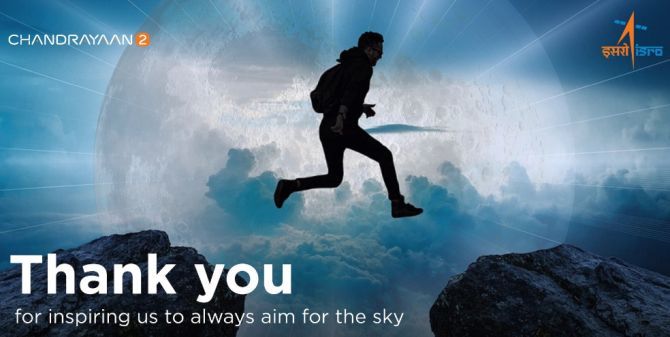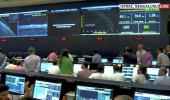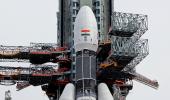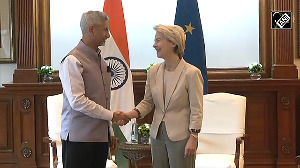Indian Space Research Organisation on Tuesday thanked Indians in the country and abroad for the support it received after the space agency lost contact with the lander of the country's second lunar mission Chandrayaan-2, minutes before touchdown on the lunar surface on September 7.

"Thank you for standing by us. We will continue to keep going forward propelled by the hopes and dreams of Indians across the world!" ISRO tweeted.
"Thank you for inspiring us to always aim for the sky," ISRO said.
The space agency had got support from the entire nation, despite it losing communication with the lander ahead of the touchdown, with people from all walks of life praising ISRO and its scientists for the achievement.
Prime Minister Modi, who had flown down to Bengaluru to watch the planned touchdown of Vikram, had told ISRO scientists not to get dejected and disheartened and said the country was proud of them.
"I see disappointment on your faces. No need to get dejected. We have learnt a lot," Modi had said.
"These are moments to be courageous, and courageous we will be! We remain hopeful and will continue working hard on our space programme", he had said.
Lander Vikram, with rover Pragyan housed inside it, lost communication with ground-stations early on September 7 during its final descent, just 2.1 kilometre above the lunar surface, minutes before the planned touch-down on the Moon.
Efforts to re-establish the link has been going on since then.
On September 8, ISRO said the lander was spotted on the lunar surface by camera on-board of the Chandrayaan-2 orbiter.
Vikram had a hard-landing.
The lander, designed to execute a soft-landing on the lunar surface, and rover have a mission life of one Lunar day, which is equivalent to 14 earth days.
The space agency after losing contact with the lander had said that till date, 90 to 95 per cent of the Chandrayaan-2 mission objectives have been accomplished and it would continue contribute to Lunar science, notwithstanding the loss of communication with the Lander.
It had also noted that the precise launch and mission management has ensured a long life of almost 7 years instead of the planned one year for the orbiter.











 © 2025
© 2025